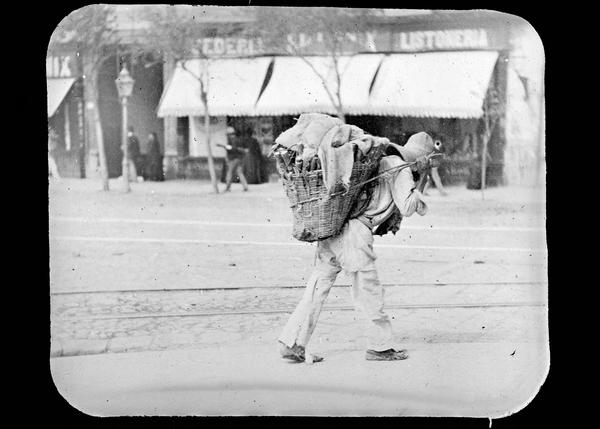
The photo above showcases the work done on United Fruit Company plantations in Costa Rica circa 1890. The United Fruit Company operated banana plantations throughout Central America and the Caribbean, transporting bananas from the southern American hemisphere to the U.S. and Canadian cities in the north. Formerly the Boston Fruit Company, it grew its empire through the creation of “Banana-Republics”. By incentivizing small Central American nations with infrastructure such as railroads and ports, they also “employed tens of thousands of people; and operated stores, hospitals, schools, radio stations, breweries, and banks” (Soluri, 395). However, this wouldn’t have been possible without the consumption and demand for bananas in the northern hemisphere. Eaten at higher rates than domestically grown fruits like apples, bananas became a staple for American households for important reasons including, nutritional value, germ-resistant properties, economic accessibility and readiness at the time of eating.
The United Fruit Company depicted itself as a pioneer in technology and business practice, it brought “modernity to ‘pestilential’ tropical regions via industrial capitalism” (Soluri, 393). The cultivation of bananas in nations like Costa Rica called for the destruction of thousands upon thousands of acres of forest. In the photograph above, the trees have a uniform appearance except perhaps for what can be seen far off in the distance. The zipline structure transporting bananas across the plantation can be seen extending beyond a body of water and coming from outside the frame of the image. How far the zipline extends is unknown, however, it is clear that by the small size of the man in the distance compared to the four men in the center he is quite far. The man being carried in the banana baskets might suggest he is coming from an equally long distance, so much so he feels compelled to take the zipline as a means of transportation to get from one section to another.
Despite the critiques of biologists such as Paul Standley, James Peters and Claude Wardlaw, who highlighted the destruction of entire ecosystems and exploitation of the land. The United Fruit Company’s abuse of the land would eventually lead to the spread of the Panama disease which destroyed entire plantations and farms as it spread throughout the Americas. The company along with its competitors continued to destroy more land and abandon land it deemed unfit or contaminated to meet demands. The “Banana-Republics” which enabled and allowed these practices for infrastructure and financial gain shows the dependency of Latin America on export oriented economies that ultimately gave them the butt-end of the stick. The destruction of not only their lands and forced dependency on a foreign entity but the eventual toll it took on their working population, affected by agrochemicals and exploitation was severe.
Works Cited
Soluri, John. “Accounting for Taste: Export Bananas, Mass Markets, and Panama Disease.” Environmental History 7, no. 3 (2002): 386–410. https://doi.org/10.2307/3985915.









